
Learning Math at Mealtimes
Make math yummy—teach basic math skills at mealtime!
Measuring
Kids can help measure ingredients as grown-ups cook. As grown-ups measure, they can use words such as full, empty, more than, and less than.
Parts of a Whole
When sharing a sandwich, say, “I’m cutting the sandwich in half so that each of us gets one piece.” Hold the two pieces together to remind kids that they make up one whole sandwich. Now cut the sandwich halves in half again. Ask, “How many pieces did I make?”
Count the Amount
Give everyone some food, such as a few pretzels or crackers. Ask kids to count the items in their piles. Did everyone get an equal, or the same, amount? How many pieces would you need to subtract from each pile to make them all the same?
3-D Shapes
Give kids empty, closed coffee or oatmeal containers to help them discover the shape of a cylinder. Count the two bases (the top and bottom surfaces). Point out the circles on the bases. Explore all the ways to use a cylinder! Does it roll? How might kids use the cylinder’s top or bottom?
Let’s Eat!
A child who helps out in the kitchen has part ownership of the meal. When you prepare meals with kids, talk about their flavors, smells, and textures, increasing vocabulary with words such as “spicy” and “crunchy.” Let kids be “assistant chefs” and stir, pour, and wash vegetables. Following directions for measuring and counting will enhance their math and listening skills. And observing what happens to food as it cooks or cools is science!

The Power of Following Children’s Lead
Joining children in their play offers so many opportunities to encourage, communicate, bond, spark and share joy, teach, show warmth and kindness, and help them thrive.
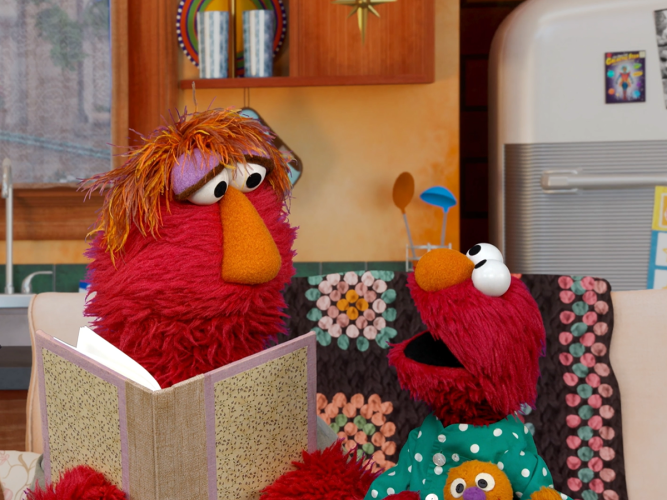
Go To Sleep, Elmo!
Handling a middle-of-the-night monster moment.
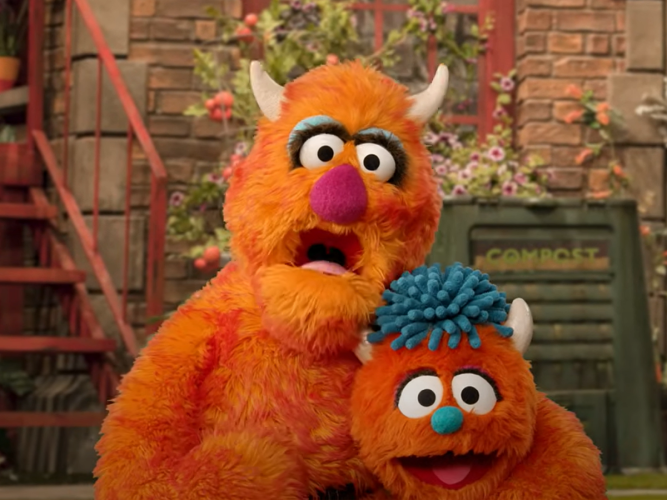
Monster Meltdown
Meltdowns happen… but they are somewhat predictable! As you try to handle them, curiosity and patience go a long way.
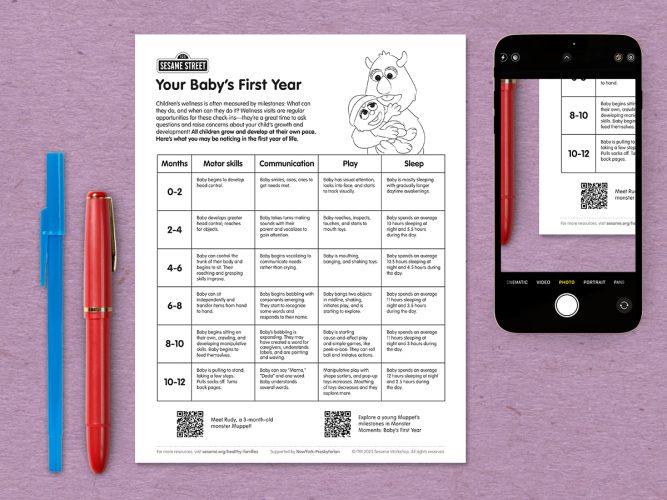
Milestones: Your Baby’s First Year
All children grow and develop at their own pace; use this chart to guide your expectations and observations so you can talk to your child’s pediatrician about questions or concerns.
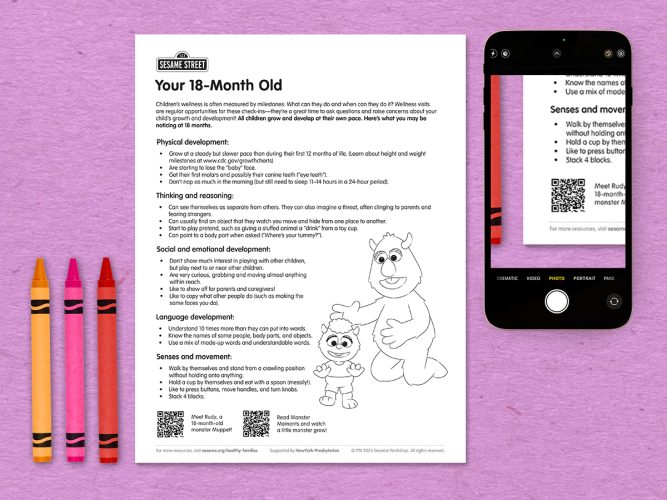
Milestones: Your 18-Month Old
All children grow and develop at their own pace; use this chart to guide your expectations and observations so you can talk to your child’s pediatrician about questions or concerns.
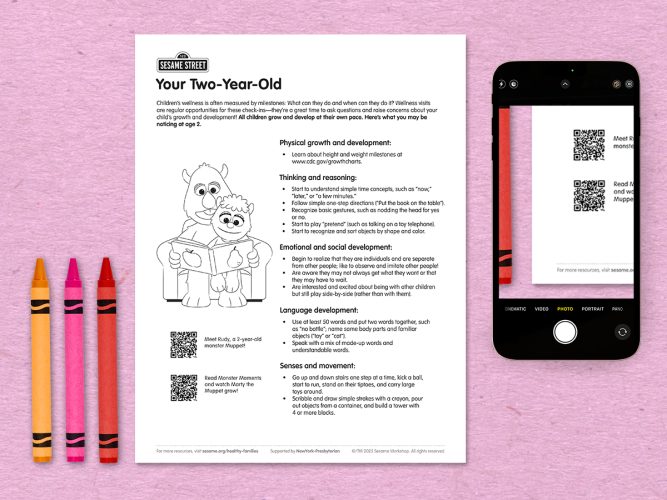
Milestones: Your Two-Year-Old
All children grow and develop at their own pace; use this chart to guide your expectations and observations so you can talk to your child’s pediatrician about questions or concerns.
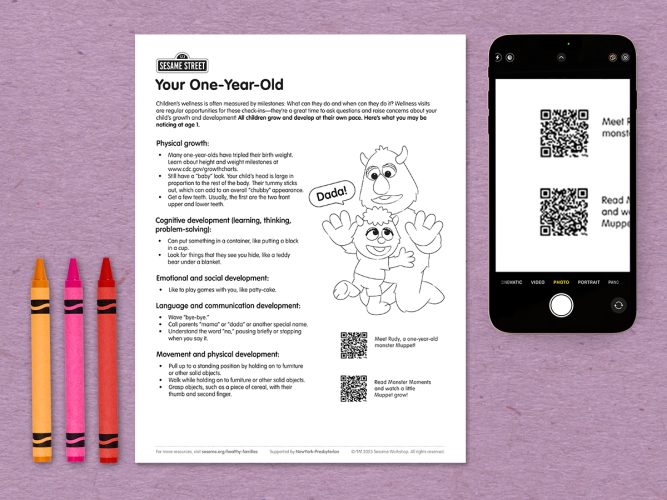
Milestones: Your One-Year-Old
All children grow and develop at their own pace; use this chart to guide your expectations and observations so you can talk to your child’s pediatrician about questions or concerns.
